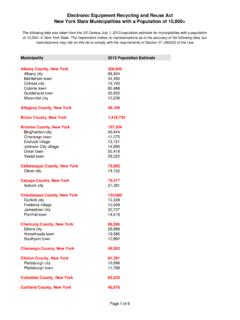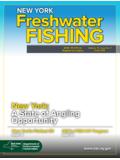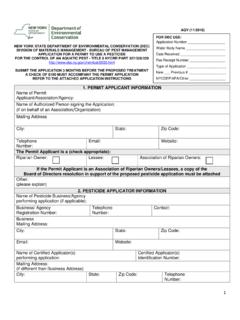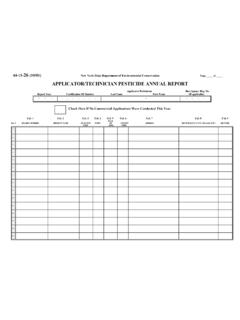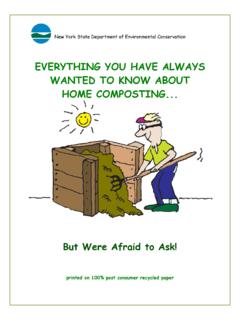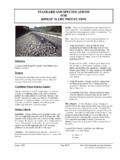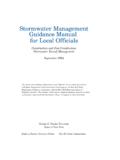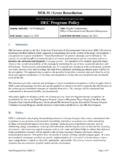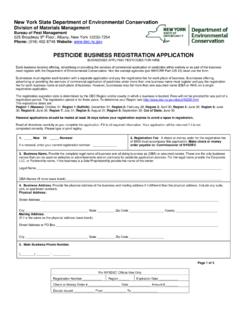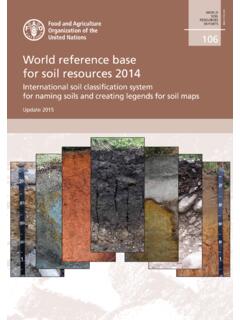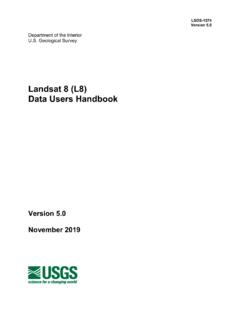Transcription of 6 NYCRR Part 613 - Petroleum Bulk Storage
1 6 NYCRR PART 613 Petroleum BULK Storage (Statutory Authority: Environmental Conservation Law (ECL) sections 1-0101, 3-0301, 3-0303, 17-0301, 17-0303, 17-0501, 17-1001 through 17-1017, and 17-1743; Navigation Law sections 173, 175, 176, 178, and 191) TABLE OF CONTENTS Subpart 613-1 General Provisions .. 3 Purpose .. 3 Applicability .. 3 Definitions .. 3 Access to records and facilities .. 12 Recordkeeping .. 13 Preemption .. 13 Approval of local laws or ordinances .. 13 Variances .. 16 Registration .. 16 References .. 18 Severability .. 23 Subpart 613-2 UST Systems Subject to Both Subtitle I and Title 10 .. 24 UST systems: design, construction, and installation .. 24 General operating 36 Leak 39 Reporting, investigation, and confirmation.
2 47 Operator 49 Out-of-service UST systems and closure .. 52 Subpart 613-3 UST Systems Subject Only to Title 10 .. 55 UST systems: design, construction, and installation .. 55 General operating 64 Leak 69 Reporting, investigation, and confirmation .. 75 Out-of-service UST systems and closure .. 77 Subpart 613-4 AST Systems .. 79 AST systems: design, construction, and installation .. 79 General operating 86 Inspections and leak detection .. 89 Reporting, investigation, and confirmation .. 93 Out-of-service AST systems and closure .. 95 6 NYCRR Part 613 Oct. 11, 2015 Page 1 of 106 Subpart 613-5 Delivery Prohibition .. 97 Circumstances and process for imposing a delivery prohibition .. 97 Prohibitions.
3 99 Notifications .. 100 Termination of delivery prohibition .. 100 Subpart 613-6 Release Response and Corrective Action .. 102 102 Initial response .. 102 Initial abatement measures and site check .. 102 Initial site 103 Free product removal .. 103 Investigations for soil and groundwater cleanup .. 104 Corrective action plan .. 105 Public participation .. 106 6 NYCRR Part 613 Oct. 11, 2015 Page 2 of 106 Subpart 613-1 General Provisions Purpose The purpose of this Part is to regulate the bulk Storage of Petroleum in order to protect public health and the environment. Applicability (a) Every facility is subject to the provisions of this Part. (b) Every on-shore major facility is subject to the provisions of this Part except for the provisions of section of this Part.
4 (c) Every carrier is subject to the provisions of sections (a)(7), (a)(7), and (a)(7) of this Part. (d) Any provision of this Part that imposes a requirement on a facility imposes that requirement on every operator and every tank system owner at the facility, unless expressly stated otherwise. Definitions (a) Aboveground Storage tank system or AST system means any tank system that is not an underground Storage tank system . (b) Accessible underground area means an underground area such as a basement, cellar, shaft, or vault that allows for the physical inspection of the exterior of the tank. (c) Ancillary equipment means fittings, flanges, valves, pumps, and other devices that are used to distribute, meter, or control the flow of Petroleum to and from a tank.
5 (d) Carrier means a person who transports Petroleum and delivers it into a tank system . (e) Category 1 tank system means any tank system whose tank was installed before December 27, 1986. (f) Category 2 tank system means any tank system whose tank was installed from December 27, 1986 through October 11, 2015. (g) Category 3 tank system means any tank system whose tank was installed after October 11, 2015. 6 NYCRR Part 613 Oct. 11, 2015 Page 3 of 106 (h) (h) Cathodic protection means the prevention of electrolytic corrosion of a metallic structure (tank or piping) by causing it to act as the cathode rather than as the anode of an electrochemical cell. (i) Cathodic protection tester means a person who can demonstrate an understanding of the principles and measurements of all common types of cathodic protection systems as applied to metal portions of tank systems in contact with the ground.
6 At a minimum, such persons must have education and experience in soil resistivity, stray current, structure-to-soil potential, and component electrical isolation measurements of metal portions of tank systems in contact with the ground. (j) Class A Operator means the individual who has primary responsibility to operate and maintain the UST system (s) at a facility in accordance with applicable requirements of this Part. The Class A Operator typically manages resources and personnel to achieve and maintain compliance with the requirements of this Part. (k) Class B Operator means the individual who has day-to-day responsibility for implementing applicable requirements of this Part. The Class B Operator typically implements field aspects of operation, maintenance, and associated recordkeeping for a UST system .
7 (l) Class C Operator means the individual who has primary responsibility for initially addressing emergencies presented by a spill or release from a UST system . The Class C Operator typically controls or monitors the dispensing or sale of Petroleum . (m) Compatible means, in the case of two or more substances, able to maintain their respective physical and chemical properties upon contact with one another for the design life of the tank system under conditions likely to be encountered in the tank system . (n) Containment means equipment that limits or prevents the spread of a Petroleum release. (o) Corrosion expert means a person who, by reason of thorough knowledge of the physical sciences and the principles of engineering and mathematics acquired by a professional education and related practical experience, is qualified to engage in the practice of corrosion control of metal portions of tank s ystems in contact with the ground.
8 Such a person must be: (1) a registered professional engineer who has certification or licensing that includes education and experience in corrosion control of metal portions of tank s ystems in contact with the ground; or (2) accredited or certified by NACE International as a corrosion specialist or cathodic protection specialist. (p) Department means the New York State Department of Environmental Conservation. 6 NYCRR Part 613 Oct. 11, 2015 Page 4 of 106 (q) (q) Design capacity means the amount of Petroleum that a tank is designed to hold. If a certain portion of a tank is unable to store Petroleum because of its integral design (for example, electrical equipment or other interior components take up space), the design capacity of the tank is thereby reduced.
9 Actions taken to physically alter the design capacity of a tank (such as drilling a hole in the side of the tank so that it cannot hold Petroleum above that point) will not change the design capacity of the tank. (r) Dielectric material means a material that does not conduct direct electrical current. Dielectric coatings are used to electrically isolate tank systems from the surrounding soils. Dielectric bushings are used to electrically isolate portions of the tank system (for example, tank from piping). (s) Dispenser system means equipment located aboveground that meters the amount of Petroleum transferred to a point of use outside the tank system , such as a motor vehicle. This system includes the equipment necessary to connect the dispenser to the tank system .
10 (t) Environment means any water, water vapor, land including land surface or subsurface, air, fish, wildlife, biota, and all other natural resources. (u) Excavation zone means the volume containing the UST system and backfill material bounded by the ground surface, walls, and floor of the pit and trenches into which the UST system is placed at the time of installation. (v) Facility means a single property, or contiguous or adjacent properties used for a common purpose which are owned or operated by the same person or persons, on or in which are located: (1) one or more tank systems having a combined Storage capacity of more than 1,100 gallons (including a major facility); or (2) an underground tank system having a Storage capacity that is greater than 110 gallons.
